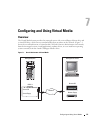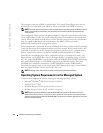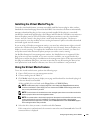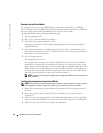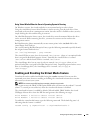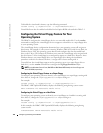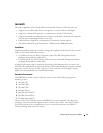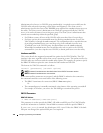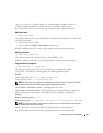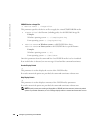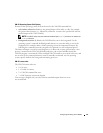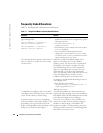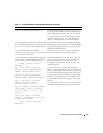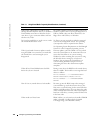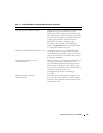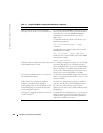
Configuring and Using Virtual Media 119
<
RAC-IP-address
> is a valid IP address, in standard numbers-and-dots notation, or
(if
DRAC 4 support for DDNS is available and active) the DRAC 4 DDNS name.
If an invalid value is detected, an error message displays and the command terminates.
DRAC 4 User Name
-u <
DRAC-user-name
>
This parameter provides the name of the DRAC 4 user under whose authority the Virtual Media
tasks will be performed.
• The user name must be valid.
• The user must have
DRAC Virtual Media User
permission.
If DRAC authentication fails, an error message displays and the command terminates.
DRAC User Password
-p <
DRAC-user-password
>
This parameter provides the password for the specified DRAC 4 user.
If DRAC 4 authentication fails, an error message displays and the command terminates.
Floppy/Disk Device or Image File
-f <
device-name
> | <
image-file
>
This parameter specifies the device or file to supply the virtual floppy/disk media.
<image-file> is the filename (including path) of a valid floppy/disk image file.
Example:
Windows operating system: -f c:\temp\myfloppy.img
Linux operating system: -f /tmp/myfloppy.img
NOTE: If the file is not write-protected, Virtual Media may write to the image file. Use the OS-provided
mechanism to write-protect a floppy image file that should not be overwritten.
<device-name> on Windows systems: a valid floppy/disk drive letter.
<device-name> On Linux systems: a valid floppy/disk device special filename, including the
number of the partition containing a mountable file system, if the disk is partitioned.
Example:
Windows operating system: -f a:\
Linux operating system: -f /dev/sdb4 # 4th partition on disk device /dev/sdb
NOTE: If the device provides a write-protection capability, you can use that mechanism to ensure that
Virtual Media will not write to the media.
Omit this parameter from the command line if no floppy media is to be virtualized.
If an invalid value is detected, an error message displays and the command terminates.



